Lists and tables
You'll learn how to use some basic features that will help you to quickly find what you need and change what you see in a ![]() > task
> task
To see it all in action, watch the Working with lists and tables video lesson (5:00) ![]() .
.
Overview
Lists
In Ajera ![]() > tasks
> tasks
Different types of lists show different types of information and therefore have different features.
Tables
Often, detailed information appears in a ![]() > task
> task
Find a name or description quickly
On ![]() > task
> task
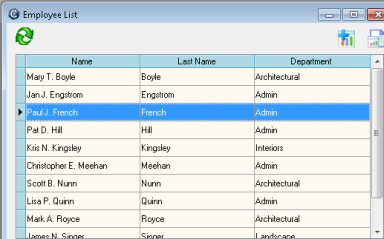
Ajera highlights the best fit for the name or description.
Change the order
When you see these arrows on a ![]() > task
> task
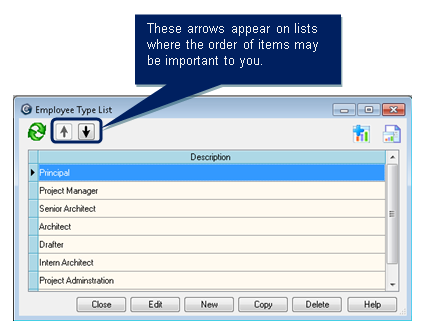
To change the order of an item, click it and then click the arrow.
Use buttons - a refresher
As you learned earlier in this lesson, use these buttons on ![]() > task
> task
- Show or hide columns by clicking
 (Customize). This change remains in effect until you change it again.
(Customize). This change remains in effect until you change it again. - Change the information you are currently viewing by clicking
 (Change View). This change remains in effect until you close the window.
(Change View). This change remains in effect until you close the window. - If you are working with multiple users or have multiple sessions running, update the list with the most current information by clicking
 (Refresh).
(Refresh).
Sort by a column
You can sort ![]() > task
> task
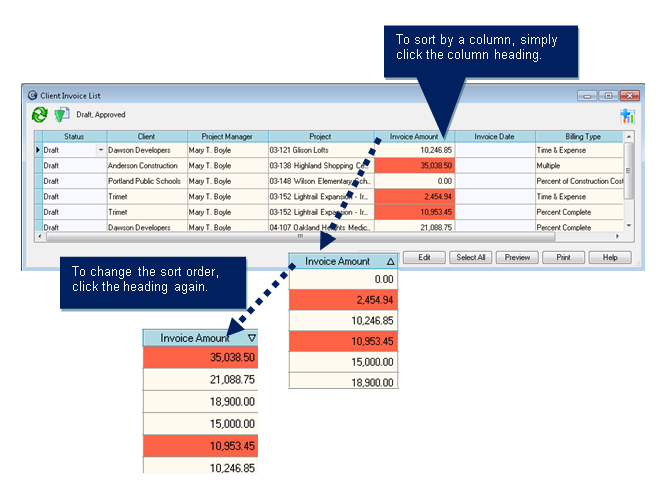
Limit, or filter, information
In ![]() > task
> task
For example, you want to see invoices for only the Lightrail project. Here's how you would do it:
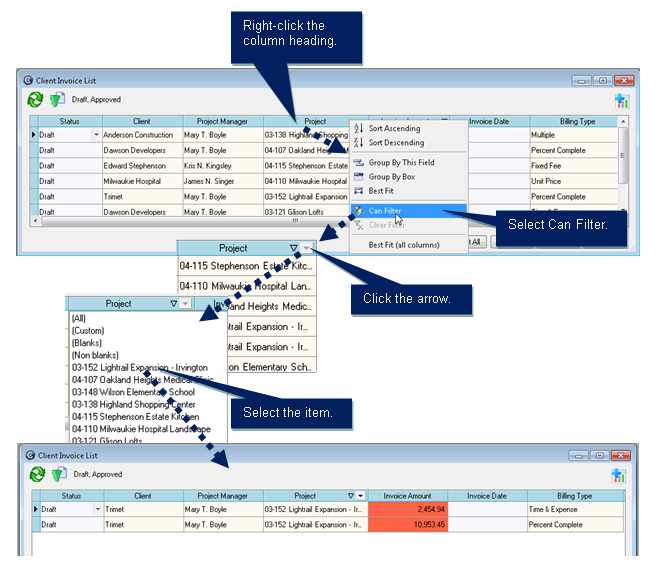
To see all the invoices again, you would right-click the column heading and click Clear Filter.
This type of change remains in effect only until you close the window.
View only items with a particular status
For example, you may want to see only active employee types.
In ![]() > task
> task![]() and make a selection.
and make a selection.
| Note: | If there
is no status column, either it does not apply, or it is an additional
column you can add using  (Customize). (Customize). |
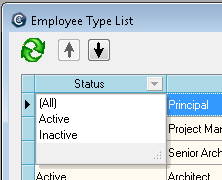
This type of change remains in effect only until you close the window.
Resize columns
It's easy to resize columns in a ![]() > task
> task
| To | Do this |
|---|---|
|
Resize a column |
Click and drag the right boundary on the column heading until the column is the width you want. |
|
Resize a column to fit the widest row |
Right-click the column heading, and click Best Fit. |
|
Resize all columns to fit the widest rows |
Right-click any column heading, and click Best Fit (all columns). The new column widths are permanent and can be changed only using Best Fit (all columns) option. |
| Note: | The effects of the Best Fit and Best Fit (all columns) options are permanent until you use the option again. When you resize a column by dragging a border, the change remains only until you close the window. |
Grouping like entries together
There are times when you may want to see information in a ![]() > task
> task
Here's how you do it:
- Right-click the column heading, and click Group by this field.
In this example, on the Client Invoice List window, after right-clicking the Client column and clicking Group by this field, the list is grouped by client:
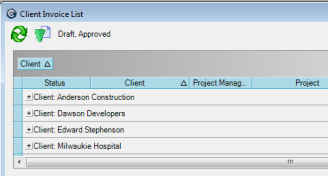
Here is the list after you click the plus ![]() sign to expand the client information:
sign to expand the client information:
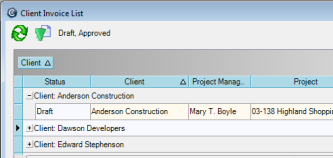
To return to the standard view, right-click the column heading and click Ungroup.
